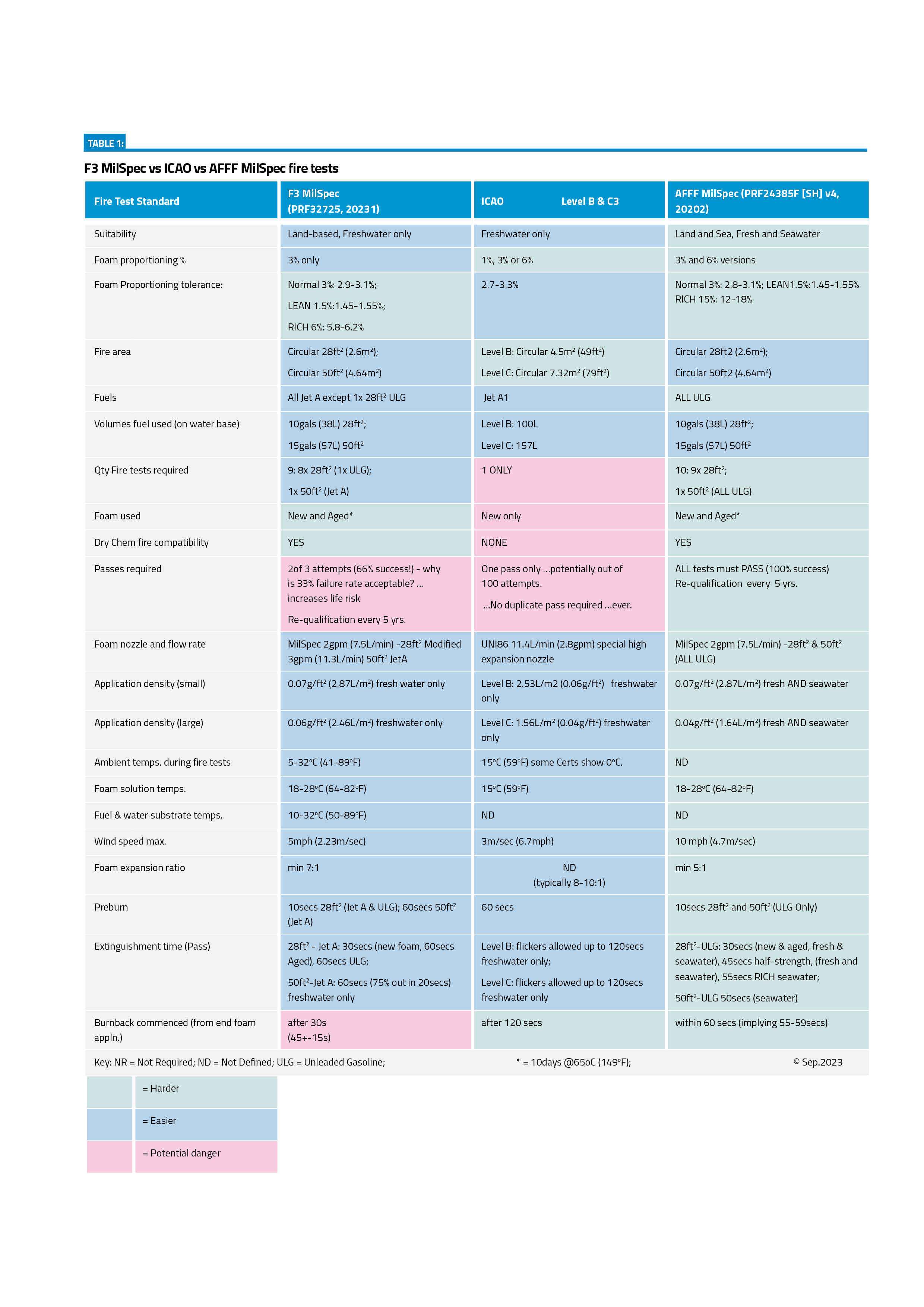Comparison F3 MilSpec vs ICAO vs AFFF MilSpec fire tests
Posted: 30 October 2023 | Mike Willson
View the comparison table for F3 MilSpec vs ICAO vs AFFF MilSpec fire tests from Mike Willson’s article in Issue 4 2023 of International Airport Review.
This comparison table highlights significant differences between new F31, existing MilSpec2 and ICAO3, including fire testing mostly on easier Jet A fuel, not gasoline. The new F3 MilSpec1 is more equivalent to ICAO level B not C, but with important extra testing beyond ICAO requirements3. With slower extinguishments and longer 50ft2 pre-burn, should fuel volumes be higher for F3 MilSpec? ICAO uses a special nozzle delivering generally higher foam expansion3 than proprietary nozzles widely used by ARFF Services (typically closer to 5:1 expansion1,2) tougher to pass than ICAO’s test nozzle nearer 10:1 expansion. 2020 NFPA Research Foundation testing17 confirmed F3s may require 25-50% higher application using 3-4:1 expansion than 7-8:1 expansion on volatile fuel fires like gasoline (relevant for on-airport car parks, including multi-storey often adjacent to terminal buildings). F3 MilSpec benefits from reduced wind speed and short delay before burn back testing, which does not represent realistic firefighting conditions.
Let’s not be fooled by a wide ambient temperature testing range either, as fire testing is always conducted under the minimum required temperature conditions1,3 to attain the best results for qualification. Another strong reason for verification testing requirements under hot summer conditions of 40oC or above, particularly when prevailing temperatures exceed the 38oC flashpoint of Jet A/A118 increasing vaporisation and volatility, so it behaves more like gasoline and is harder to extinguish.















